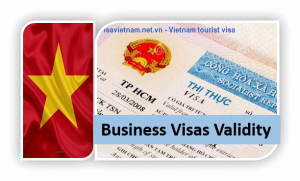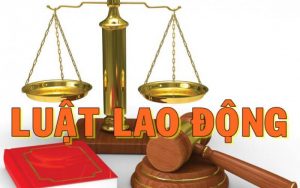
US – China Trade War Inspires Vietnam Growth (Source)
Vietnam has continued to expand its economic growth that is the fastest in Southeast Asia in 2019 as it had the advantage due to the US-China trade war in 2019 and now post-COVID19, even more FDI wants to move out of China and some have already chosen Indonesia as an option, but now they don’t want to concentrate on one particular country as per their experience to relying only on China. So, the challenges remain with investors for additional alternatives to their Chinese operations with low-cost input markets such as Vietnam.
Due to this the sectors which gained the most from FDI are Manufacturing, tourism and private consumption which are the main contributors to Vietnam’s strong GDP growth of 7 percent as well as increasing exports to the US.
The country’s GDP in 2019 remained robust at seven percent the highest in Southeast Asia, as per official government data. It also enjoyed the second strongest first-quarter growth in the past decade, surpassed only by 7.45 percent in 2018. Exports to the US jumped by 34.8 percent year on year in the first nine months of 2019.
This is despite import duties imposed in March 2018 by the US on Vietnam’s steel products. The tariffs were imposed to prevent steel products that originated from China that attempted to bypass anti-dumping rules. The Vietnamese government, subsequently, issued new regulations related to the origin of exported and imported goods. Even during this global lock-down Vietnamese economic growth is projected to be 3.5 percent. So lets analysis the few important parameters before considering to have FDI in Vietnam, which are as follows:
Industries which have gained the most

The apparel industry, which performed particularly well, followed by textile companies moving operations to Vietnam from China. This was achieved due to the fact that China’s economy slowed down and reduction of Vietnam’s export to the country by 7 percent.

Vietnam’s economy is being driven by consumer spending, which accounts for close to 70 percent of its GDP. With the third-largest population in ASEAN, and the expansion of upper and middle-income earners, the economy is expected to grow further. Manufacturing in itself grew by 12.3 percent.
The US was Vietnam’s biggest export market, followed by the EU and China. However, Vietnam also spent US$57.98 billion on importing goods in the first quarter of 2019 with an increase of 8.9 percent. Major import products included equipment and material for production, electronic products, and computer components.
A survey by the American Chamber of Commerce in Guangzhou showed that Chinese companies were losing market share to companies in Asia and particularly to Vietnam.
Several companies, particularly those making furniture, refrigerators, and car tires moved production to Vietnam, South Korea, Taiwan, and Mexico due to the ongoing US-China trade war and also the announcement made by Japanese government to give additional benefits if the outsourcing Japanese manufacturing would move out of China.
Recently, Ohio-based Cooper Tire and Rubber Co formed a joint venture with Sailun Vietnam Co Ltd to build a tire factory near Ho Chi Minh City, while another US company Key Tronic Corporations signed an agreement to lease a manufacturing facility near Da Nang.
Due to these, the government has put Infrastructure development as number one priority by providing Approximately 99 percent of the population with access to electricity, which is 14 percent higher compared to 1993. The government is also spending a significant amount to expand roads, real estate, ports, bridges and aviation.
Challenges for foreign investors
While several companies have moved operations to Vietnam, new investors continue to find it challenging. This is because of the lack of the same level of manufacturing infrastructure in China, as well as the quality of sourcing materials. At present, Vietnam’s infrastructure and supply chain network, and suppliers represent what China was a few years ago; this is something that the government will need to work on.
Products that require a high level of technical precision, like aerospace parts, for example, might be harder to source in Vietnam. A simple search for suppliers of plastic, for example, on an online website yields a small number of potential Vietnam manufacturers as compared to China.
Further, China’s wages have risen 60 percent since 2011, which has put a strain on profits, particularly for labor-intensive industries. Still, Vietnam’s wages tend to be low at US$132 to US$190 per month depending on the region, as compared to US$163 to US$361 in China.
Vietnam’s advantages
Vietnam has a relatively stable government and low wages. In 2018, it unseated Singapore as Southeast Asia’s top-grossing market for initial public offerings. In 2010, Vietnam surpassed China for the first time as the leading producer of Nike shoes.
In the Ease of Doing Business report by the World Bank, Vietnam’s ranked 70 with improvements to accessing credit and payment of taxes.
Vietnam recently ratified the Comprehensive and Progressive Agreement for Trans-Pacific Partnership (CPTPP) which was formerly known as TPP when the US was still a mutual partner and on June 8th 2020 ratified EU-Vietnam (EVFTA & EVIPA) free trade agreement which will allow more FDI as early as from August 2020 into the country with lower tariff structures.
Vietnam’s closer proximity to China, along with its location in the ASEAN region, allows manufacturers to sell and move equipment quicker across the border. This not only helps companies sell and move goods and equipment from China to Vietnam and vice versa, but also helps facilitate trade with its ASEAN neighbors.
Reforms Vietnam is Pursuing
Vietnam has to continuously invest in hi-tech manufacturing and infrastructure. It has to facilitate SME development to align further with global supply chains. The government is also looking at disinvesting state-owned enterprises (SOEs) which are at times marred with corruption and lack of accountability. Corporate governance requires improvements to be on par with international standards.
Vietnam offers a steady business environment, particularly for those looking to trade in ASEAN and the larger Asia Pacific region. The market is also suitable for investors looking to use its favorable business environment to sell their products to the US and EU.

The future impact of the trade war
With ongoing frosty relations between the US and China, foreign companies have found it pertinent to move operations elsewhere from China.
The tariffs have especially affected small and medium-sized businesses who have seen Jump in their manufacturing costs. This has resulted in businesses working with suppliers to find alternate countries such as Vietnam to bypass the tariffs. Several others are starting to take control of their supply chains using local expertise.
However, it is important to note that instead of abandoning the Chinese market, investors are choosing to supplement Chinese operations with low-cost input sources from markets such as Vietnam.
Vietnam is clearly benefiting from the trade war and is emerging as an alternative favorite for companies, but the government still has its work cut out to keep Vietnam competitive, while further improving its business environment.
With a flurry of companies moving operations to Vietnam, costs for land, taxes, wages, and automated production lines are also steadily rising. Foreign investors looking to enter Vietnam must work with local experts to ensure their businesses are able to reap a return on investment.
So, HOW GPO CAN ASSIST?
We at GPO can assist you by hiring and managing an freelancer market researcher and if everything goes as per your expectations we can introduce an business legal partner for getting your business registered in Vietnam and then offer our core service of been your HR business partner in Managing your daily HR activities, as we are an HR business consultancy firm in Vietnam. So, please do share your contact details with us by clicking on this link http://hroutsourcing.gpo.vn/
Top
















